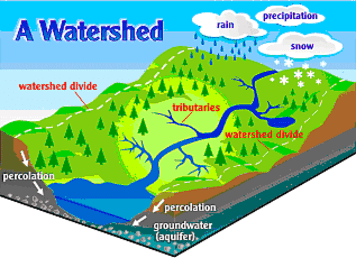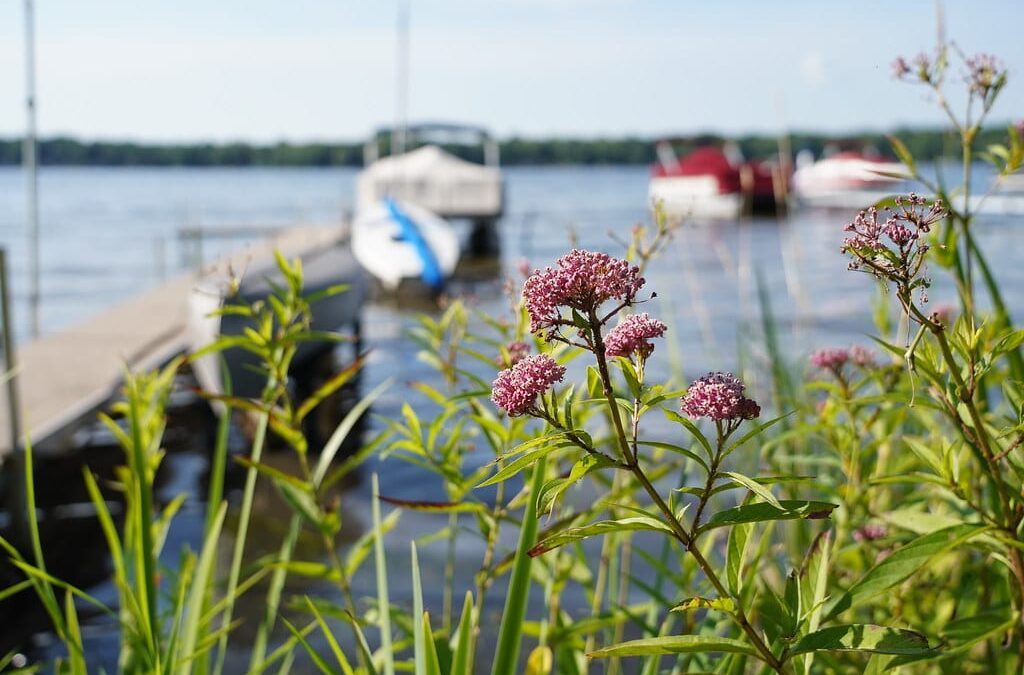Photo credit Mark Bugnaski Photography
I’m sure you learned at a very young age that actions have consequences. Use the toilet – candy treat. Get good grades – perhaps you got a cash reward. Hit your brother – get hit back harder. Some consequences are good, some are bad. The same is true for your behavior on land and the consequences in the water. Your actions at your home, school or business, away from the lake, have consequences on Lake Maxinkuckee’s water quality, some good and some bad.

To explain, let’s start by defining a watershed.
Watershed – an area of land that drains to a common stream, lake or river.
Our watershed is, appropriately named, the Lake Maxinkuckee Watershed. Next time we get a good rain, think about where all the water goes. Water flows from high to low ground, into rivers and ditches and eventually, Lake Maxinkuckee. Some of it will infiltrate down through the soil, recharging the aquifer. Much of it ends up as runoff, picking up pollutants along the way. The rainwater travels across parking lots, picking up oil, litter, road salt and sediment. It flows over beautifully manicured turf grass lawns recently fertilized and sprayed with herbicides, picking up those chemicals as well. It travels across newly plowed crop fields, bringing the excess sediment with it. Some runoff goes to the wastewater treatment plant but much of it flows directly into the local waterways, and ultimately, our lake.

Decisions we make on the land today have consequences on water quality right now and fifty years from now. Yahara2070 is a research project at UW-Madison predicting future scenarios based on data collected today. It looks at long-term impacts of social and environmental change in Wisconsin’s Yahara watershed and much of the information can be applied to our local watershed.
Watersheds can be subdivided into smaller units known as subwatersheds, which collectively flow together to form larger watersheds.
Just as creeks drain into rivers, watersheds are nearly always part of a larger watershed.
xxxx
“What you do makes a difference, and you have to decide what kind of difference you want to make.”
~ Jane Goodall
Some positive actions you can take today include:
- using phosphate free cleaning products
- test your soil prior to applying fertilizer
- use phosphorus free fertilizer
- pick up pet waste
- use native plants in your landscape
- install a raingarden
- install a rain barrel
We all live on the land; therefore, we all live in a watershed. The condition of the watershed directly impacts the condition of our waterways. That’s why the Lake Maxinkuckee Environmental Council’s mission statement is “Working toward the preservation of an ecologically sound Lake Maxinkuckee and its surrounding watershed.” LMEC is a resource for everyone living in the Lake Maxinkuckee watershed.
For more tips on how to protect Lake Maxinkuckee and its surrounding watershed, visit www.lakemax.org

Hi, I’m Debbie Palmer. I received a BS in Horticulture from Purdue University. Here at LMEF, I am responsible for outreach presentations, monitoring the lake and it’s wetlands, project manager for restoration and research projects, and act as a community resource for all things related to the well-being of Lake Maxinkuckee and its surrounding watershed. I completed Indiana Watershed Leadership Academy, volunteer with the Indiana Clean Lakes Program, Hoosier River Watch and Marshall County Lakes and Waters and serve as a Board Member for Indiana Lakes Management Society.


Recent Comments